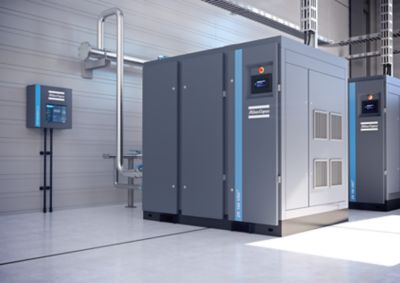Forgotten causes of contamination in compressors
Micro organisms – the forgotten compressed air contaminant
Of the three types of compressed air contamination – oil, particulates and moisture – the latter is often overlooked. After all, “it’s just water,” so what could go wrong? A lot, actually, and neglecting the possible damage moisture can do to your compressed air system and your end products will often turn out to be an extremely expensive mistake.
First of all, it is important to remember that moisture is the most prevalent type of compressed air contamination. A big reason is that the compression process creates a lot of moisture. When ambient air is compressed into a much smaller space, the moisture that this air always contains accumulates. As a result, a large compressor can produce several liters of water per hour.
This moisture poses a dual threat as a source of compressed air contamination:
- The more obvious problem is that it can lead to corrosion, which can harm your compressed air equipment, shorten maintenance intervals and lead to costly downtimes. The “hidden” risk, however, can be even more serious:
- Untreated air that contains moisture can result in the growth of microorganisms like fungi, mold and bacteria. In fact, microorganisms absolutely thrive in the conditions found in compressed air systems: warmth and humidity.
That’s a real problem … because these microorganisms do not just pose a problem for your compressed air system itself but also a danger to your end products. This is especially true the case in industries producing perishable goods or products ingested by customers, such as the food & beverage, medical, and pharmaceutical sectors. Here, the presence of fungi, mold, or bacteria can do serious harm to your customers, your reputation, and your bottom line.
Fighting sources of contamination in compressed air
Fortunately, there is something you can do about this type of compressed air contamination. The solution is both simple and complicated: You have to deprive the microorganisms of the warm and humid conditions they need to grow by creating a dryer and cooler environment.
There are different strategies you can and should pursue to protect your compressed air system and your end products alike.
Reduce moisture
Your first goal should be to reduce moisture wherever you can … and that begins with the ambient air. If possible, you should try to set up your air compressor in a cool and dry environment.
Check for leaks
Next, you should periodically check your system for leaks, which is something you should do in any case. These leaks not only waste energy – and therefore needlessly drive up your operating costs – they also offer an entry point for microorganisms into your system.
Compressed air testing
Another important aspect of safeguarding your equipment and your products is to test your compressed air regularly. This will alert you to the presence of microorganisms and allow you to take the proper steps in a timely manner before you develop problems that spiral out of control.
Select the right air treatment equipment
However, the most important thing you can do to protect your system from compressed air contamination is investing in the proper air treatment equipment.
Various technologies are available to help you keep moisture out of your system, such as dryers and aftercoolers.
- Air dryers
As the name indicates, dryers dry your air by removing water from it. In some cases, they are already built into compressors while others are added as standalone products. Depending on your application and its purity requirements, you can choose between a refrigerant dryer or a desiccant dryer. The latter is especially effective in removing moisture and creating super dry air. - Aftercoolers
Aftercoolers are installed directly after the compressor and remove condensation from the system before it can contribute to the growth of microorganisms. - Air filters
Finally, you can and should also use filters in several places throughout your system. They are an effective tool to combat the different types of compressed air contamination and meet your air quality and purity targets.
However, the filters themselves can also offer ideal environments for microorganisms if they are not replaced on a regular basis, so you should develop a plan for doing so.
We offer all of these air treatment products – and much more – and stand ready to assist you with any questions you have about how to avoid moisture in your system, protect it from microorganisms, and which technologies and methods make the most sense for you.

